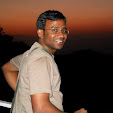

Just an attempt to describe some of the hikes done with my beloved friends!...



From Korigad, we headed for Telbail from Peth Shahapur via Saaltar paas!...one may wonder the beauty of the road from Lonavla upto the Amby Valley!...but the real fun begins from Peth Shahapur onwards!...
On the way to the Telbail village, right from the Saaltar paas, the road is so fascinating that the Maharashtra Government should organise a MOTOCROSS competition over there!...in this way, we can attract lots of tourists to find the UNKNOWN MAHARASHTRA!...
The road is full of stones...we had to drive very carefully so that the bikes wouldn't get punctured out!...But at the same time, it was heartening to see the Maharashtra ST buses plying through this difficult road!...hats off to them!...How they manage to track this road is really commendable!...
Do enjoy!
Members: Vishal Chaughule, Rajesh Raut, Nitin Gavkar, Amol Shiral, and Sambhaji Chopdekar
Fort Manikgad is accessible from Vashivali for which we had decided to gather at Kurla station for Panvel. By the time we had reached the Panvel bus stand, the ST for Dand-Vashivali was just waiting for us (08.30 a.m.). The condition of the bus was too miserable to describe! But still, it’s commendable that at least we have the facility to reach the remote villages!
The journey was excellent as we could see Kalavantin Durg, Prabalgad and Irshalgad towards the left on the way. After the Kon phata the ST entered into the Patalganga MIDC zone. It recollected the fond memories of my in-plant training during my B. Sc. (Tech.) tenure.
The ST reached Vashivali at about 09.30 a.m., keeping the large Reliance plant to the left-hand side. One can easily locate two-three liquor bars nearby, maybe for the benefit of the MIDC workers (…and for those so-called nature-lovers!).
One vada-pav vendor advised us to ascend the hillock in front of us that would have been easier. A customer there also told us about a Mango tree as an easy landmark. However, on the suggestion of another hotel owner, we decided to go straight toward in the direction of Manikgad to the village - Vadgaon from which there exists another route. Here, one should not forget - whichever be the route the target must be the same-ascending the hillock.
So, we headed for Vadgaon from a nearby right diversion after having some eatables at Vashivali. After reaching there, we realized it’s not advisable to go to Vadgaon straightway as the route is not so accessible due to the thick bushes. So, one should move to the right-hand side from the mango tree at Vashivali itself.
However, we forgot this important landmark and reached Vadgaon instead, as we were busy observing the beautiful Manikgad. Then onwards it was a very hectic trek as we had to look for the correct path through the bhulbhulaiyya. After spending some valuable two hours, we could reach the top of the hillock and see the much-desired view of the Manikgad to the South.
 |
| Devastated bastion beside the Ganesh Gate Nearby there is a Dolkaathi with a small temple (ghumaTi). The house (waaDa) is now in the ruined state.
|
 |
| Returning: the Mumbai-Pune highway is visible from here! The return journey was
fabulous and at the same time, frightening too, as we were being surrounded by
the darkness with no torch! |
